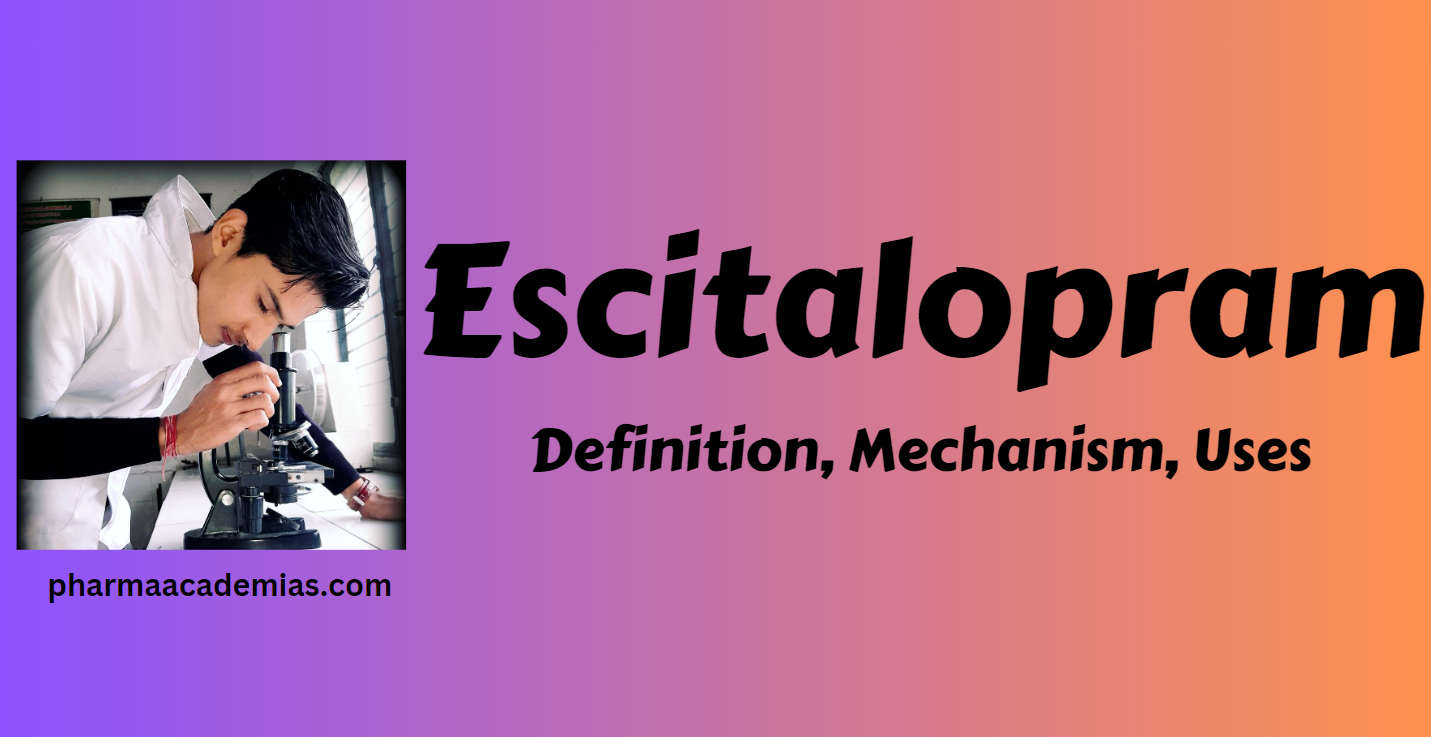Paroxetine is an antidepressant medication that belongs to the class of drugs known as selective serotonin reuptake inhibitors (SSRIs). It is commonly prescribed to treat various mood disorders. Uses 1. Major Depressive Disorder (MDD): Paroxetine is widely prescribed for the treatment of major depressive disorder. 2. Obsessive-compulsive disorder (OCD): It …
Fluvoxamine – Definition, Uses, Mechanism, Side effects
Fluvoxamine is an antidepressant medication that belongs to the class of drugs known as selective serotonin reuptake inhibitors (SSRIs). It is commonly prescribed to treat obsessive-compulsive disorder (OCD), social anxiety disorder, and other mood disorders. Uses 1. Obsessive-compulsive disorder (OCD): Fluvoxamine is frequently prescribed for the treatment of obsessive-compulsive disorder. …
Escitalopram – Definition, Uses, Mechanism, Side effects
Escitalopram is an antidepressant medication that belongs to the class of drugs known as selective serotonin reuptake inhibitors (SSRIs). It is the Senantiomer of citalopram and is used to treat various mood disorders. Uses 1. Major Depressive Disorder (MDD): Escitalopram is commonly prescribed for the treatment of major depressive disorder. …
Citalopram – Definition, Uses, Mechanism Side effects
Citalopram is an antidepressant medication that belongs to the class of drugs known as selective serotonin reuptake inhibitors (SSRIs). It is commonly prescribed to treat major depressive disorder and other mood disorders. Uses 1. Major Depressive Disorder (MDD): Citalopram is widely prescribed for the treatment of major depressive disorder. 2. …
Sertraline – Definition, Uses, Mechanism, side effects
Sertraline is an antidepressant medication that belongs to the class of drugs known as selective serotonin reuptake inhibitors (SSRIs). It is commonly prescribed to treat various mental health conditions. Uses 1. Major Depressive Disorder (MDD): Doctors widely prescribe sertraline for the treatment of major depressive disorder. 2. Obsessivecompulsive disorder (OCD): …
Duloxetine – Deffinition, Uses, Mechanism
Duloxetine is an antidepressant medication that belongs to the class of drugs known as serotonin-norepinephrine reuptake inhibitors (SNRIs). It is also used in the management of certain chronic pain conditions, making it a dual action medication. Uses 1. Major Depressive Disorder (MDD): Doctors commonly prescribe duloxetine for the treatment of …
Venlafaxine – Definition, Uses, Mechanism
Venlafaxine is an antidepressant medication that belongs to the class of drugs known as serotonin-norepinephrine reuptake inhibitors (SNRIs). It treats major depressive disorder, generalized anxiety disorder, social anxiety disorder, and panic disorder. Uses 1. Major Depressive Disorder (MDD): Doctors commonly prescribe venlafaxine for the treatment of major depressive disorder. 2. …
Fluoxetine- Definition, Structure, Uses, Mechanism
Fluoxetine is an antidepressant medication that belongs to the class of drugs known as selective serotonin reuptake inhibitors (SSRIs). It is commonly prescribed to treat various mental health conditions. Chemical Structure Fluoxetine is a selective serotonin reuptake inhibitor (SSRI) with the chemical formula C17H18F3NO. Uses 1. Major Depressive Disorder (MDD): …
Imipramine Hydrochloride – Definition, Structure, Uses, Mechanism
Imipramine hydrochloride is a medication belonging to the class of tricyclic antidepressants (TCAs). It is commonly used to treat various mental health conditions, primarily major depressive disorder (MDD). Imipramine hydrochloride works by affecting the balance of certain neurotransmitters in the brain, particularly serotonin and norepinephrine, which play a role in …
Amitriptyline hydrochloride- Definition, Mechanism, Uses
Amitriptyline hydrochloride is a tricyclic antidepressant (TCA) medication commonly used to treat various mental health conditions. Here are some key points about amitriptyline hydrochloride: Mechanism of Action Amitriptyline works by inhibiting the reuptake of neurotransmitters, specifically serotonin and norepinephrine, in the synaptic cleft. This leads to increased levels of these …










